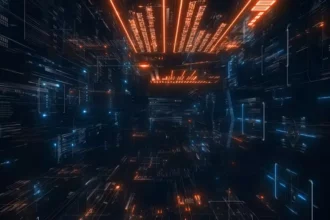Table of Contents
ToggleInside OpenAI’s Plan to Embed ChatGPT Into College Students’ Lives
OpenAI aims to deeply integrate ChatGPT into college students’ academic and professional lives by expanding AI literacy, increasing access, and developing policies that support responsible use and skill acquisition. This strategy addresses both student demand and educational gaps while confronting concerns about academic integrity.
Key Strategies by OpenAI
Demystifying AI
About 75% of college students want AI training, but only 25% of universities offer related programs. OpenAI plans to change that by embedding AI into curricula. Their focus includes:
- Job search strategies enhanced by AI tools
- Exam preparation techniques using AI assistance
- Guidance on internship scouting and applications
By promoting AI literacy, OpenAI intends to help students align education with a rapidly evolving job market, preparing them for automation-influenced careers.
Driving Access
Though many students discover AI tools like ChatGPT independently, cost and lack of guidance can limit usage. OpenAI pushes institutions to:
- Raise awareness about free AI products
- Subsidize advanced AI tool access for equitable use
Students who employ AI tools often report improved productivity and time management during assignments and exam preparation.
Developing Comprehensive Policies
OpenAI continuously updates an Economic Blueprint, proposing policy advancements such as:
- Including AI apprenticeships in 529 savings plans
- State legislation mandating AI literacy similar to ISTE standards
- Public-private partnerships to align education with workforce demands
This holistic approach aims to ensure that students not only access AI but also develop relevant skills for future workplaces.
Student Perspectives: Embracing and Challenging AI Use
AI Usage and Efficiency
A 2023 survey showed 56% of college students used AI for their academic work. Examples include idea generation, essay drafting, and study support.
“ChatGPT is like having a personal tutor on call,” says Sarah, a freshman. “It helps me maintain my grades while managing my schedule.”
Concerns about Academic Integrity
Increased AI reliance raises questions. Some students admit heavy dependence, like Chungin “Roy” Lee, who reports using AI for nearly 80% of his essays.
This trend challenges traditional learning and complicates enforcing academic honesty. Policies across universities vary, often leaving students uncertain about boundaries.
“Professors’ AI policies differ widely,” notes Wendy, a finance major. “It feels like the responsibility is on us to interpret these guidelines.”
Educator Responses and Concerns
Faculty explore ways to discourage AI misuse, including reverting to oral exams. Experts worry students might graduate without critical thinking skills.
“Many graduates risk being illiterate despite degrees,” warns technology ethics researcher Brian Patrick Green.
AI’s Impact on Learning Outcomes
Compromised Learning Processes
While OpenAI promotes ChatGPT as an educational tool, critics argue it risks reducing deep engagement.
“Using AI feels like cheating, but time management is tough,” says Daniel, a computer science major. “I question if I’m truly learning.”
This tension between convenience and comprehension is central to the debate on AI in academia.
The Road Ahead: Reshaping Education
Evolving Definitions of Cheating and Standards
As AI use rises, what counts as cheating changes. Sam Altman, OpenAI’s CEO, suggests traditional paper writing may become obsolete, urging educational adaptation.
Yet scholars like Troy Jollimore caution against letting AI erode essential critical thinking skills.
Navigating the Changing Educational Landscape
The introduction of AI feedback tools calls for redefining learning and success. This challenge requires combined efforts from institutions, educators, and students to balance innovation with intellectual rigor and ethics.
Key Takeaways
- OpenAI targets expanding AI literacy and equitable access in colleges.
- ChatGPT aids student productivity but raises academic integrity issues.
- Policy development seeks to integrate AI use fairly and responsibly.
- Educators face challenges maintaining critical thinking amid AI reliance.
- Future education demands adapting standards and ethical frameworks.
Inside OpenAI’s Plan to Embed ChatGPT Into College Students’ Lives
OpenAI’s vision is clear: seamlessly embed ChatGPT into the daily academic lives of college students, making AI a powerful ally rather than a mysterious or forbidden tool. But how exactly do they plan to do that? What challenges do they face, and what does this mean for students, educators, and the future of education? Let’s unpack the blueprint.
Here’s a fun fact before we dive in—75% of college students want training on AI, yet only 25% of universities offer it. Quite the gap, right? OpenAI is determined to close this gap by shaping how AI tools like ChatGPT become part of students’ educational journey, not just an occasional sidekick.
Demystifying AI: Making AI Less Scary, More Useful
OpenAI knows that most students want to learn AI skills, but schools aren’t quite keeping up. So, the first big move is to integrate AI literacy into education. Why? Because understanding AI isn’t just a technical skill anymore—it’s a survival tool in the job market.
OpenAI promotes real-world applications, focusing on how AI can help with practical student tasks: job hunting, acing exams, finding internships, oh my! By embedding these topics into curricula, students can get hands-on experience using AI to solve everyday problems.
An OpenAI spokesperson sums it up perfectly: “Promoting AI literacy is essential for students to align their academic goals with the demands of an evolving job market.” Imagine finishing your resume or prepping for exams with ChatGPT by your side—that’s the vision.
Driving Access: No Student Left Behind
AI tools like ChatGPT can turbocharge productivity. Students report finishing assignments faster and studying more effectively. But there’s a catch: cost and awareness can create barriers.
OpenAI urges universities to spotlight free products, making sure every student can grab access without fees. Plus, subsidizing advanced AI tools ensures equity—because an AI tool that’s locked behind a paywall doesn’t help much.
Consider this: a survey in 2023 showed 56% of college students already using AI for assignments. It’s not just a trend; it’s a wave. Making AI accessible means riding that wave, not sinking under it.
Developing Comprehensive Policies: Shaping the Future of Education
Embedding AI into academia isn’t just about tools—it’s about smart policies. OpenAI’s evolving Economic Blueprint calls for fresh approaches: expanding 529 savings plans to cover AI apprenticeships, drafting state legislation to weave AI literacy into core standards, and boosting public-private partnerships to tailor education to workforce needs.
Imagine your savings plan helping pay for AI training, giving you a leg up in a tech-driven economy. This isn’t sci-fi; it’s the roadmap OpenAI advocates.
“By fostering a culture of AI literacy, we enable students to unlock their potential,” says their representative. Education isn’t static; it’s morphing, and policies must keep pace.
From the Student Desk: Embracing and Wrestling With AI
Let’s get real. ChatGPT isn’t just a lab experiment—it’s in the hands of students right now.
- Sarah, a freshman at Wilfrid Laurier University, calls ChatGPT her “personal tutor on call.” It helps her maintain grades while juggling time.
- But then there’s Roy from Columbia University. He admits almost 80% of his essays came straight from ChatGPT’s output. Convenience over traditional study? Apparently so.
This duality captures the tension perfectly: AI is a lifesaver but also a shortcut that challenges academic honesty.
Faculty aren’t blind to this. Professors craft AI policies—but they vary wildly. Wendy, a finance major, notes that the “boundaries seem really unclear.” Students are left interpreting the rules, making the ethical waters murky.
Educators Grapple With a New Reality
Some professors fight back by reinventing exams, favoring oral tests or unique assignments that AI can’t easily tackle.
Brian Patrick Green, a tech ethics researcher, voices a stark concern: “Many students will graduate essentially illiterate.” That’s no small worry, highlighting the risk AI poses to deep intellectual engagement.
The core issue? Are students learning, or just outsourcing their work to AI? Daniel, a computer science major, asks the question many hesitate to voice: “Am I learning? Sometimes I wonder if I could do it without AI.”
Impact on Learning Outcomes: Convenience vs Mastery
Reliance on ChatGPT may shortcut traditional learning steps. This introduces risks: students might forgo critical thinking, reducing education to task completion.
Critics worry about eroding foundational skills needed for complex problem-solving and creativity. The instant “answer machine” might dull intellectual rigor.
But is this a fatal flaw or an opportunity to rethink education?
The Road Ahead: Redefining Learning and Cheating
The old lines between cheating and legitimate aid blur. Sam Altman, OpenAI’s CEO, puts it this way: “Writing a paper the old-fashioned way is not going to be the thing.” Education must evolve to reflect new realities.
Still, educators like Troy Jollimore warn of the cost: critical thinking skills may decline if students surrender to AI’s ease.
Navigating this shifting terrain requires collective effort. Innovative AI tools can provide deep feedback and support—but preserving intellectual rigor depends on balanced implementation.
Institutions, teachers, and students all share responsibility. It’s about harnessing AI’s power without losing the essence of learning: deep engagement, ethical reflection, and skill growth.
Final Thoughts: A Glimpse Into the AI-Integrated Classroom
OpenAI’s plan isn’t about replacing human learning but enhancing it—provided the integration is thoughtful and well-managed.
Imagine a classroom where AI assists with research, helps draft essays, and offers career advice, while educators focus on nurturing critical thinking and creativity. This hybrid education model could make learning more accessible and personalized than ever before.
But it’s not an automatic win. Challenges—ethical, practical, and pedagogical—must be tackled head-on.
As AI creeps into college life, the real question for students might be: Will you use ChatGPT as a tool to learn smarter, or as a crutch that stops you from learning at all? The choice matters, because the future of education isn’t just about AI; it’s about how we choose to integrate it.
How is OpenAI addressing the lack of AI training in colleges?
OpenAI plans to integrate AI education into curriculums by offering programs focused on real-world applications. These include job searching, exam prep, and internship strategies. Their goal is to improve AI literacy aligned with job market needs.
What measures are being taken to ensure equitable access to ChatGPT for students?
OpenAI encourages colleges to raise awareness of free AI tools and subsidize access to advanced versions. This approach aims to break down cost barriers and help all students benefit from AI-enhanced productivity.
How do students feel about using ChatGPT for their academic work?
Many students find ChatGPT helpful for managing time and improving grades. For example, over half have used AI in assignments, praising it as a valuable study aid similar to a personal tutor.
What concerns exist around academic integrity with AI use?
There are rising worries about students relying heavily on AI for assignments, which complicates enforcement of honesty. Policies vary by professor, creating uncertainty about proper AI usage.
How are educators responding to AI’s impact on learning?
Some educators attempt to reduce AI misuse by using oral exams or traditional assessments. They worry about students graduating without key critical thinking skills, due to overreliance on AI.
What changes to academic standards does OpenAI foresee due to AI’s rise?
OpenAI’s CEO suggests redefining academic success to include AI tools, moving beyond traditional writing methods. This calls for reforms that balance tech use with critical thinking development.




